Website Security on a Budget: The Small Business Owner's Survival Guide to Cyber Threats
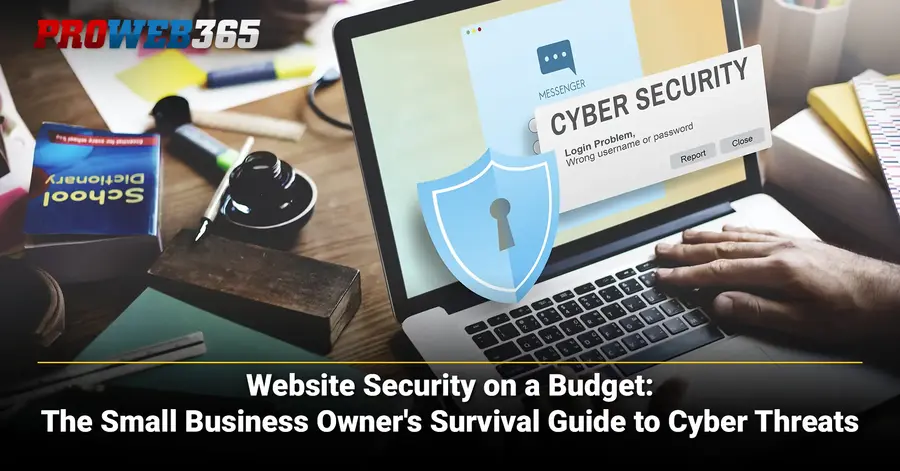
Running a small business means your website is often the primary way to appear to customers and interact with them on the web. Unfortunately, it also makes you a target. Cybercriminals exploit outdated software, weak passwords, and unsuspecting employees, knowing smaller firms usually lack robust security teams. Recent data shows that about 43 percent of cyberattacks now target small businesses, and more than half close within six months after a breach. Understanding how to protect your website can mean the difference between a brief disruption and catastrophic loss.
This guide explains why website security matters, how to recognize a compromised site, steps to take if infected, and proactive measures every small business should implement. It also describes how to build a cybersecurity culture along with answering frequently asked security questions.
Key Takeaways
- Cyberattacks increasingly target small businesses with severe consequences: Nearly half of all cyberattacks aim at small businesses, and 60 percent of those that are hit go out of business within six months. Cybercrime costs small and medium businesses millions annually.
- Prompt action is essential when your site is infected: Contact your hosting provider immediately to remove malicious code, update the content management system (CMS) to patch security holes, and check whether your domain has been blacklisted.
- Preventive maintenance reduces risk: Regularly update CMS and plugins, back up your website, use reputable antivirus software, enforce strong passwords with multi-factor authentication, and adopt a web application firewall.
- Cybersecurity is a culture, not a one-time fix: Train employees to recognize phishing and develop an incident response plan. Invest money into reliable hosting and security services because a small monetary investment today can save you a large amount down the road.
A Strategic Guide to Selecting a Great Website Designer
When you're a small to mid-size business owner or organizations, a website is more than just an online brochure; it's a foundational pillar for your identity, operations, and growth. In the AI era, a professional,...1. Why Website Security Matters for Small Businesses
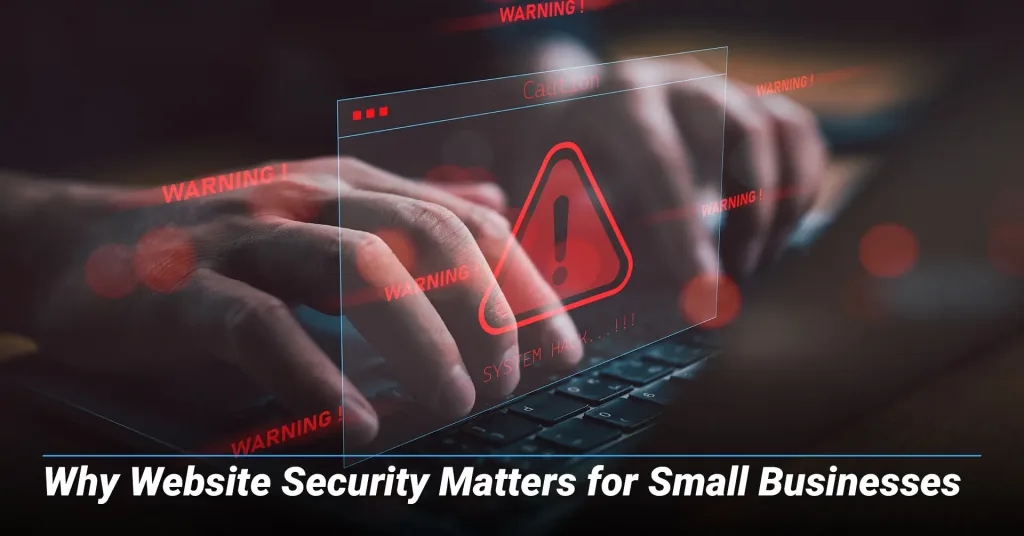
Cyberattacks are no longer limited to big corporations. Attackers realize small businesses often lack resources to defend themselves, making them lucrative targets. Key statistics underscore the urgency of investing in cybersecurity:
| Statistic | Value | Implication for Small Businesses |
|---|---|---|
| Share of cyberattacks targeting small businesses | ≈ 43% | Almost half of all attacks are aimed at small firms |
| Share of small businesses that shut down after a cyberattack | ≈ 60% | More than half of victims close within six months |
| Average annual cost of cybercrime to small and medium businesses | > $2.2 million | Downtime, legal fees and reputational damage quickly add up |
| Year-over-year increase in small business breaches | ≈ 424% | The risk is growing exponentially |
Beyond direct financial losses, a compromised website erodes customer trust, harms search rankings, triggers fines for mishandled data, and causes significant downtime. Customers seeing browser warnings about malware rarely return. In regulated industries including healthcare or finance, there are likely legal obligations to report breaches.
2. Recognizing a Compromised Website

Malware infections often begin quietly through outdated plugins, default passwords, or poorly configured servers. Common signs your website has been compromised include:
- Browser warnings or red flags: Modern browsers warn users about sites distributing malware. A red screen alert or sudden traffic drop often indicates blacklisting.
- Unexpected redirects or pop-ups: Sites redirecting to spam pages or displaying unauthorized ads likely have malicious scripts running.
- New or modified files: Hackers place backdoors in rarely monitored directories. Watch for unexpected file changes or unknown users.
- Sluggish performance: Malware can turn your site into a botnet — hacked computers controlled as a group without the owner’s knowledge — causing slower response times and unexplained bandwidth consumption.
Act immediately if you notice these signs to prevent further damage.
The Small Business Guide to Winning Customers Through AI Search Optimization
The internet is constantly evolving, and AI in search engines is being used to find business for customers. For small to mid-size business owners, understanding and adapting to these technological advances is crucial for growth....3. What to Do if Your Website Is Infected with Malware
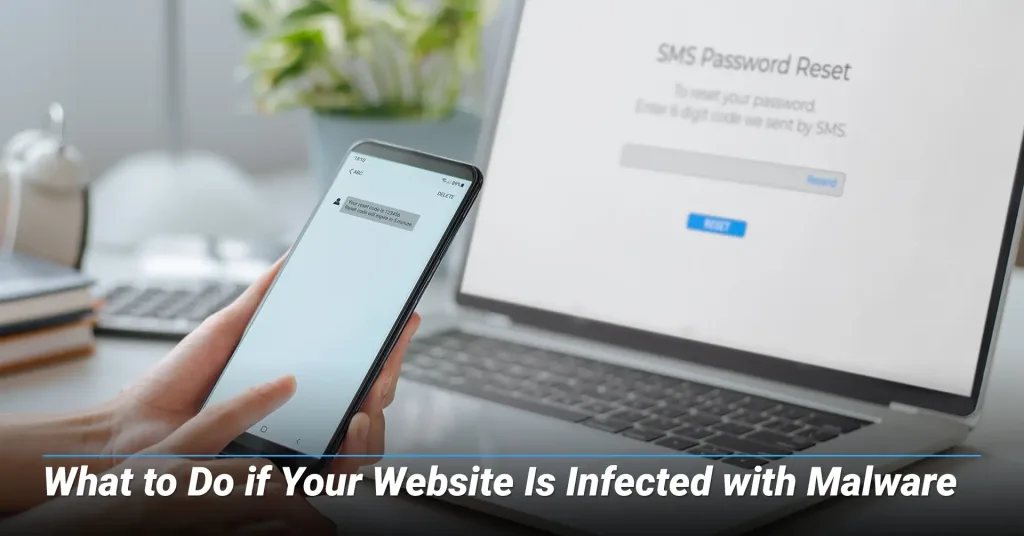
Quick, methodical action can limit damage and restore credibility. Follow these steps:
- Contact your hosting provider or web developer immediately: Many hosting companies offer malware removal services or can recommend specialists. Budget hosting rarely includes robust security support.
- Remove malicious code and clean the site: Work with professionals to scan your server and remove infected files, backdoors, or unauthorized accounts. Only use professional malware-scanning tools for your business.
- Update your CMS, plugins and themes: Outdated platforms often contain vulnerabilities. After cleanup, update to the latest stable versions of all software.
- Check blacklist status and request removal: Use tools like MXToolbox or Google Search Console to check if your domain is blacklisted and follow removal instructions promptly. Delisting can take one to two weeks.
- Strengthen defenses to prevent recurrence: Reset all passwords, enable multi-factor authentication (MFA), review user privileges, and schedule regular security scans and backups.
4. Proactive Website Defense Measures
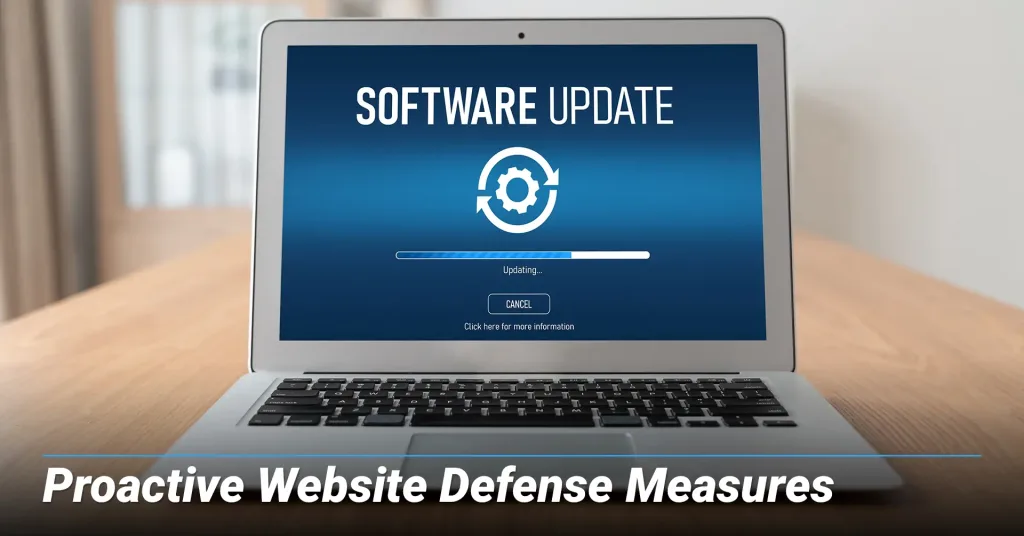
Prevention is the best defense. Implement these practices to build a secure foundation:
- Keep software updated: Regular updates patch known vulnerabilities. Postponing them gives hackers more time to exploit older versions.
- Use strong passwords and enable MFA: Require complex passwords for administrative accounts and avoid reusing passwords. Multi-factor authentication adds a crucial extra step for verification.
- Back up your website regularly: Maintain automated, off-site backups and periodically test restoration to ensure they work.
- Install a web application firewall (WAF): A WAF filters malicious traffic and blocks common attacks like structured query language (SQL) injection and brute force attempts.
- Adopt HTTPS (Hypertext Transfer Protocol Secure)/SSL (Secure Sockets Layer) encryption: SSL certificates encrypt data between your site and visitors. Browsers flag non-HTTPS sites as "Not Secure," and search engines favor encrypted sites.
- Limit user privileges: Give users only necessary access. Remove unused accounts, and review login logs for suspicious activity.
- Choose quality hosting: Opt for providers offering regular updates, security monitoring, and backups. Cheaper plans may cost more long-term if they lack adequate protection.
A Guide to Finding a Good Online Marketing Agency
To build a commanding online presence, especially as a mid-size business or organization, a variety of factors need to come together and be executed effectively. Understanding your audience and connecting with them requires a high-performing...5. Building a Cybersecurity Culture in Your Business
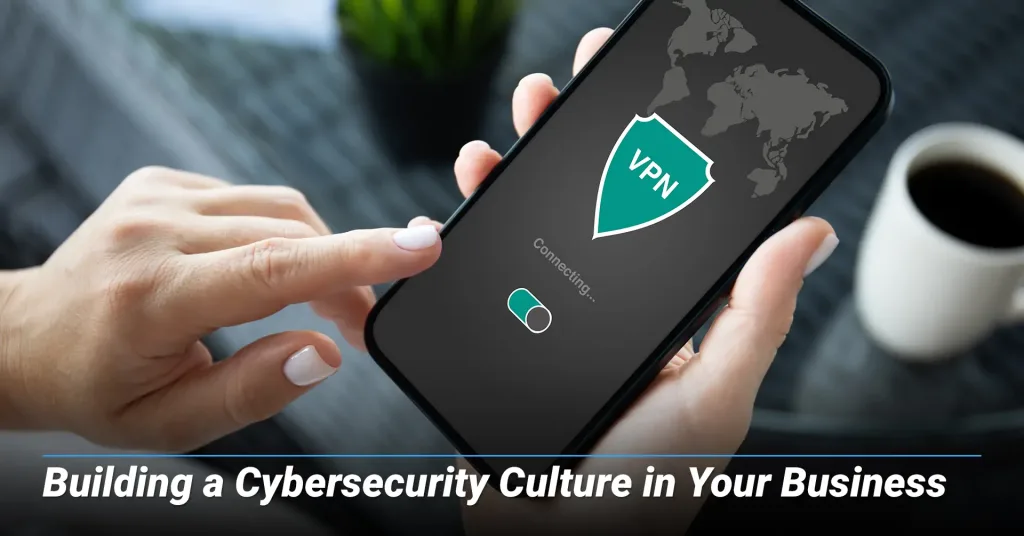
Technology alone cannot protect your business. Creating a cybersecurity culture involves training and discipline:
- Educate employees about phishing: Train your staff to recognize suspicious emails and verify URLs before clicking. Establishing protocols for reporting these types of messages will create a consistent response process and reduce the risk of security breach.
- Use updated antivirus software: Install reputable, paid antivirus on all company devices with automatic updates enabled.
- Exercise caution with downloads: Only download software from trusted sources. Avoid free software with bundled extras that could contain spyware.
- Avoid password reuse: Use a password manager to generate random passwords with twelve or more characters. It’s important to update these regularly for sensitive accounts.
- Update browsers regularly: Browser updates patch vulnerabilities hackers exploit. Check for updates monthly and install promptly.
- Enable MFA on critical services: Email accounts are gateways to password resets. MFA significantly reduces unauthorized access risk.
- Be mindful of social media: Attackers create fake profiles to spread malicious links. Limiting what personal information is shared online in a valuable way to stay cautious.
- Avoid public Wi-Fi for sensitive transactions: Use a Virtual Private Network (VPN) or mobile hotspot when accessing confidential systems on public networks.
- Dedicate devices for financial transactions: Reserve a specific computer for online banking and payroll to reduce infection risk.
- Shred sensitive documents: Properly dispose of paper records and old storage devices to prevent data recovery.
6. Developing a Cyber Incident Response Plan
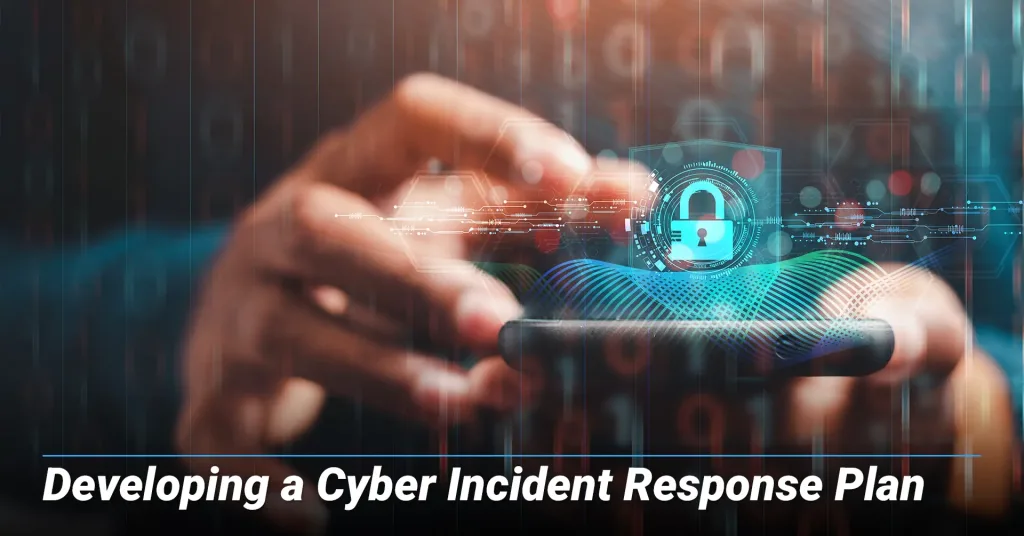
Even with strong defenses, incidents can happen. A clear response plan should include:
- Defined roles and responsibilities: Assign a team the responsibility of security incidents with contact information for providers, developers, and law enforcement.
- Documented procedures: Provide detailed steps for containing incidents, communicating internally and externally, preserving evidence, and restoring systems.
- Regular testing: Practice your plan through simulations to identify gaps and ensure everyone knows their role.
- Post-incident review: Analyze what happened and update defenses accordingly.
- Consider cyber insurance: Policies can cover breach notification expenses, legal fees, and remediation services. Evaluate whether coverage makes sense for your risk profile.
A well-prepared plan reduces confusion, accelerates recovery, and demonstrates due diligence.
Conclusion: For small businesses, a cyberattack can be devastating, but you're not powerless. By understanding risks, maintaining your systems, training your team, and planning for incidents, you can significantly reduce cybercrime's likelihood and impact. Invest proactively in security — updating software, using strong passwords, implementing MFA, backing up data, and choosing reputable hosting — to keep your website healthy and business thriving.
Why Your Brand is THE Most Powerful Asset in the AI Era
As AI begins to reshape browsing, so too is the digital landscape for small to mid-size businesses (SMBs). To go along with the tide, investing in brand strength is crucial for customer acquisition and sustainable...Frequently Asked Questions about Website Security
1. What is the difference between malware and a virus?
A virus is a specific type of malware that replicates by inserting code into other programs. Malware is an umbrella term for all malicious software including viruses, worms, ransomware, and trojans.
2. How often should I back up my website?
Back up daily if you update content frequently, weekly for static sites. Always maintain an off-site copy and test restoration regularly.
3. Do I need paid antivirus or are free products enough?
Free antivirus provides basic protection but includes ads and slower updates. Paid versions offer comprehensive coverage and better support — a small investment compared to infection costs.
4. What is a web application firewall, and should I use one?
A web application firewall (WAF) filters traffic between your website and the internet, blocking common attacks. It's highly recommended for any site processing sensitive data or with dynamic functionality.
5. Is HTTPS necessary if I don't sell products online?
Yes, HTTPS encrypts all transmitted data, protecting login credentials and contact forms. Browsers warn users about non-HTTPS sites, so encryption maintains trust and improves search rankings.
6. How can I tell if an email is phishing?
Look for generic greetings, urgent language, unexpected attachments, and mismatched URLs. Hover over links before clicking to preview its destination, and never provide sensitive information through unsolicited emails.
7. Do I need cyber liability insurance?
While not mandatory, cyber insurance can offset breach notification, legal fees, and remediation expenses. Assess risks based on the data you handle and consult an insurance professional.

Phong Nguyen
Phong brings the perfect combination of business acumen and technical expertise to digital marketing. Armed with a Bachelor of Arts degree from St. Olaf College, a master’s in business administration in Marketing from the University of St. Thomas, and SEO/GEO from “The School of Hard Knocks,” Phong founded ProWeb365.com in 2009 to help Minnesota businesses and non-profit organizations succeed online.
For over 15 years, Phong and his team’s strategic approach has combined data-driven marketing with conversion-focused design, delivering measurable results that directly impact his clients’ bottom line. Are you ready to experience what innovative digital marketing can do for your business in the age of AI search engines? Contact Us today!





